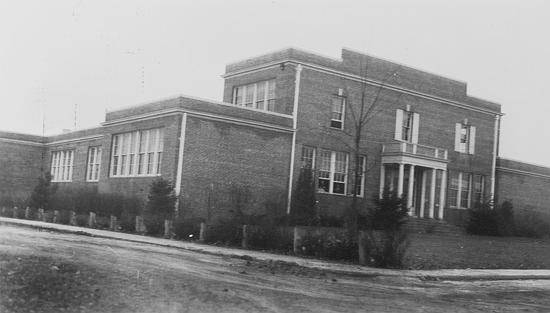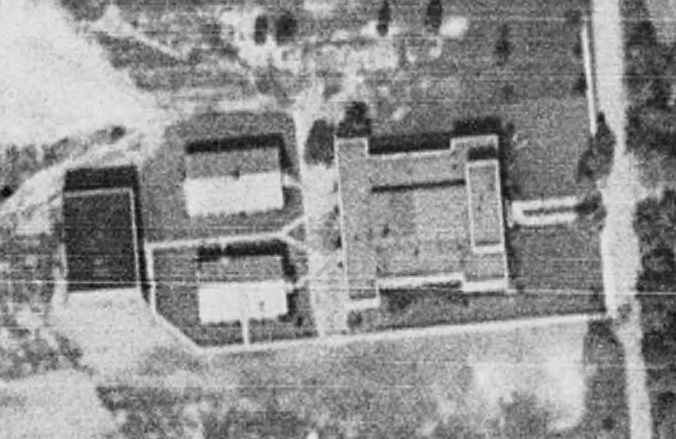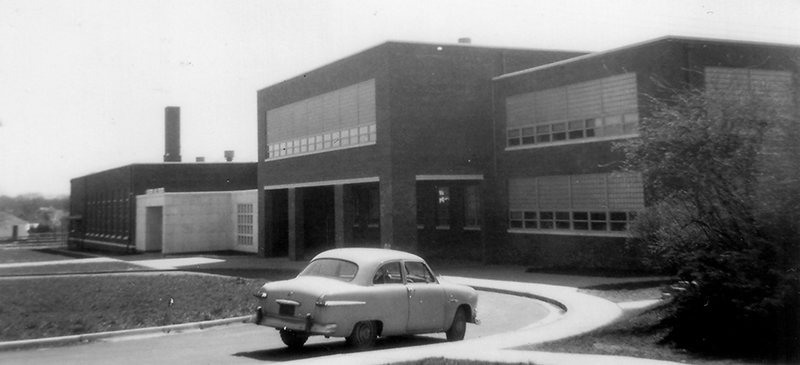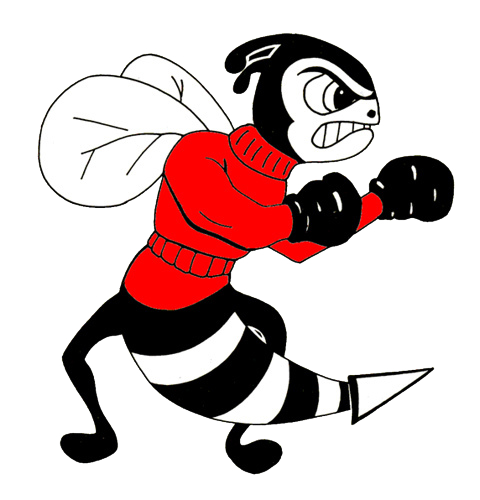School History
Herndon is the oldest continuously operating high school in Fairfax County. The first Herndon public high school building was constructed on Locust Street in 1911, on the present site of Herndon Middle School. It had eight classrooms and an assembly hall. In 1914, Herndon High School became the first fully-accredited high school in Fairfax County, and was the only accredited high school in the county until 1920. Records from 1924 and 1925 indicate Herndon was the first school in Fairfax County to offer business courses and to have an athletics department. The athletics facilities in 1924 consisted of two basketball courts, two tennis courts, a baseball field, and a 220-yard track. In 1926, Herndon High School graduated a total of 26 students.

What's in a Name?
Learn about the origin of our school's name in this video produced for Fairfax County Public Schools’ cable television channel Red Apple 21.

The first Herndon High School building was destroyed by fire in January 1927, and was quickly replaced. The new school had 12 classrooms and an auditorium, and cost $45,000 to construct. Three separate outbuildings, one for home economics classes, one for agriculture classes, and a gymnasium, were constructed behind the school around 1930. During the 1930-31 school year, 71 students were enrolled in Herndon High School.

A School of Many Firsts
1935: Our Student Government Association was formed.
1942: Herndon High School becomes the first Fairfax County public school to have a cafeteria. Meals cost five cents.
1945: Our first yearbook was published. It was hand-drawn.
1945: Our first football team was organized, and played its first game against Leesburg High School. Our school colors and mascot were the same as they are today.
1946: The first high school band in Fairfax County is formed at Herndon.
1951: Our Boys Basketball team won our first athletic state championship.
1953: Our Girls Basketball team had its first perfect season.
1958: The first Field Hockey and Girls Softball teams were formed.
1963: Herndon competed in It’s Academic for the first time.

New Facilities
When Herndon High School first opened, both elementary and secondary school classes were held in the same building. In the early 20th century, elementary school in Fairfax County consisted of grades one through seven, and high school consisted of grades eight through twelve. In 1953, a large addition was constructed next to the 1927 school building. The new building housed students in grades eight through twelve and the old building housed the elementary grades until 1961 when Herndon Elementary School opened on Dranesville Road. Herndon Intermediate School, also founded in 1961, moved students in grades seven and eight into the 1927 building, and for the next six years Herndon High School operated out of the 1953 facility.

A New Start
On September 5, 1967, Herndon High School moved to its present location on Bennett Street, and Herndon Intermediate School expanded to encompass the entire former high school campus. Much of the 1953 Herndon High School building remains in use today by Herndon Middle School, but the 1927 building was torn down in the early 1980s. During the 1966-67 school year, approximately 1,600 students were enrolled in Herndon High School. By the start of the 1970-71 school year, that number grew to approximately 2,300 students. Roughly that same number of students attend Herndon High School today.

Integration
Another major change that happened to Herndon High School in the 1960s was the racial desegregation of public schools in Fairfax County. From 1870 to 1966, public schools in Fairfax County were segregated by race. Racial integration was a slow process, beginning in 1960 and culminating county-wide at the end of the 1965-66 school year. When Herndon High School first opened, only white children from the surrounding community were admitted. There was no high school for African-American children in Fairfax County until 1954 when Luther Jackson High School, an all-African-American high school opened in Merrifield. Prior to this time, African-American children had to pay tuition to attend high school in Washington, D.C., or, beginning in 1938, students could take a bus to a regional high school in Manassas.

More Firsts
1968: Herndon becomes the first school in Fairfax County with a soccer team, and the Boys and Girls Gymnastics teams are formed.
1977: The Key Club is formed.
1984: The first NJROTC program in Fairfax County begins at Herndon High School and 90 students are enrolled.
1985: Boys Soccer wins the AAA State Championship.
1988: Boys Lacrosse begins as a sport and the SAGA Club begins.
1994: Girls Lacrosse begins as a sport, the Step Team begins with 15 students, and our first major building renovation was completed.
1997: The EXCEL club and Robotics club begin.
1999: Volleyball is added as a sport.
State Champions
Basketball (boys): 1951
Cross Country (girls): 2003
Football: 1965 (1B)
Gymnastics (boys): 1977, 1990, 1991, 2000
Soccer (boys): 1986
Track & Field (boys): 1965, 1966, 1967
Our Principals
| 1914 – 1916: | Mary S. Moffett |
|---|---|
| 1916 – 1917: | Frank Astor |
| 1920 – 1929: | Nancy Gregory Edwards |
| 1929 – 1930: | Mary Jane Cline |
| 1930 – 1931: | Oscar F. Northington, Jr. |
| 1931 – 1932: | Mr. A. S. Jenkins |
| 1932 – 1945: | John Heydrick Rice |
| 1945 – 1965: | Douglas V. Evans |
| 1965 – 1975: | James H. McFarland |
| 1975 – 1978: | Margaret W. Richardson |
| 1978 – 1983: | Murriel Price |
| 1983 – 1987: | William E. Trussell |
| 1987 – 1990: | William Ray “Bill” Caudill |
| 1991 – 1998: | Dale Sander |
| 1998 – 2004: | Janice Leslie |
| 2005 – 2007: | Frances Ivey |
| 2007: | Jim Hannon (Interim) |
| 2007 – 2009: | Agustin “Gus” Martinez |
| 2009 – 2016: | William Bates |
| 2016 – 2017: | Dan Meier (Interim) |
| 2017 – Present: | Elizabeth A. Noto |

